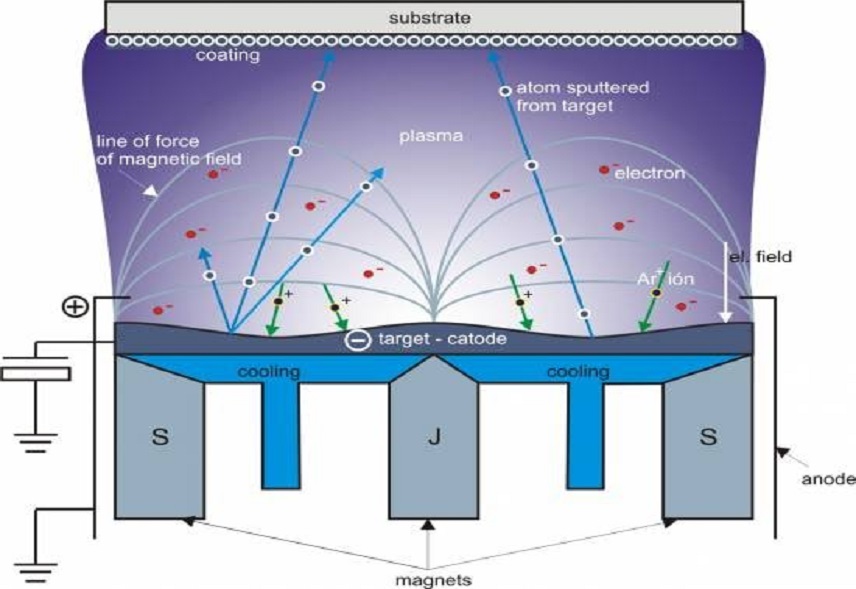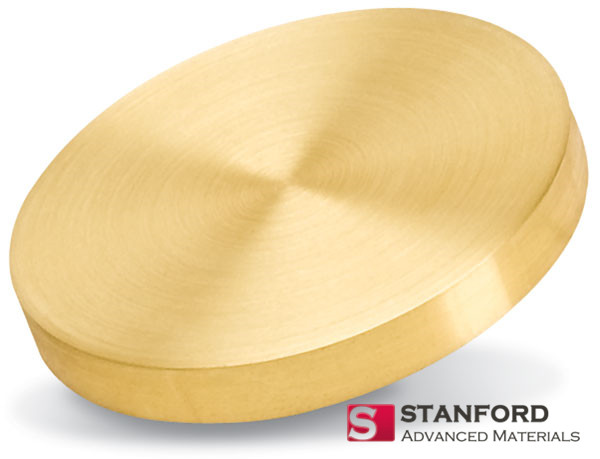Gold sputtering targets can be deposited on a semiconductor chip such as GaAs, GaP, GaN, or the like by sputtering, and can form an ohmic contact film, an electrode, and a wiring film, thereby improving the conductivity and working efficiency of the semiconductor.
The Physical Vapor Deposition Process for Semiconductor Coatings
Physical vapor deposition (PVD) is a widely used method for depositing thin films onto semiconductor substrates such as silicon wafers. The PVD process involves the transfer of material from a sputtering target or an evaporation source to a substrate. This process is carried out in a vacuum environment to prevent contamination and ensure uniform deposition of the material.
PVD is generally divided into two methods based on the principles involved in the deposition: sputtering and evaporation.

Sputtering: How It Works and Its Variations
Sputtering is like throwing stones into a pool of mud, which will splatter a lot of mud and cover the surface of other objects. Sputtering relies on argon plasma to impact the gold sputter target at high speed, thus sputtering the material near the surface of the target and dropping it onto the wafer to form a gold film.
Sputtering is also divided into direct current (DC) sputtering and radio frequency (RF) sputtering depending on the energy source of the plasma excitation. Basically, both methods can be coated with a metal film. The latter is more directed to non-metallic films such as piezoelectric or magnetic materials. The film formed by sputtering has the characteristics of insulation and a high melting point.
Evaporation: Types and Differences from Sputtering
The evaporation method differs from the heating method and is classified into two types: a thermal coater and an E-gun evaporator. The former is to directly put the pellets prepared for melt evaporation on the heating tungsten wire. Once heated, it will adhere to the heated tungsten wire due to the surface tension of the liquid and then be steamed to the periphery (including the wafer). Due to the limited heat resistance of the heated tungsten wire and the limited space for the molten metal, it is only used for low melting point materials, and the film thickness is limited.
The electron gun-type vaporizer uses an electron beam for heating, and the molten and evaporated metal particles are all placed in a graphite or tungsten crucible. When the metal vapor pressure exceeds the critical limit, it begins to slowly evaporate for four weeks (including wafers). The electron gun-type vaporizer can evaporate a metal with a higher melting point and the thickness is not limited.
Advantages and Applications of Gold Sputtering Targets in the Semiconductor Industry
Gold sputtering targets have several advantages that make them a highly desirable material in the semiconductor industry. One of the most significant advantages of gold sputtering targets is their high electrical conductivity, making them ideal for use in forming electrodes, ohmic contacts, and wiring films in semiconductors. Furthermore, gold sputtering targets are known for their excellent adhesion properties, which ensure a strong bond to the substrate surface.
Conclusion
In conclusion, gold sputtering targets are important materials in semiconductor coating applications, and both sputtering and evaporation are commonly used methods for PVD. The choice of method depends on several factors such as deposition rate, film quality, and adherence of the deposited film required for the application. For more information, please visit https://www.sputtertargets.net/.

